
Smooth, round bullet-shaped (or bathtub shaped, if you prefer) automobiles were the wave of the future in 1949. While US automakers were still selling every facelifted prewar car they could make-at an EXTREMELY healthy profit-it couldn’t last. While no cars had been built during WWII outside of a select few for Army staff cars and such, stylists, having a lot of free time, were coming up with all sorts of wild creations on paper and in clay. New! Futuristic! Streamlined! Modern, all-brand-new cars of the near and not-so-near future. The redesigned 1949 Nashes took streamlining perhaps as far as it could be taken at the time.

While Studebaker had beaten every other car maker to the punch with its revolutionary ‘coming or going’ 1947 models, the Nash ‘Airflyte’ models that were unveiled in late 1948 were like nothing seen before. They were drastically, unapologetically aerodynamic, with smooth envelope bodies and nary a hint of separate fenders.
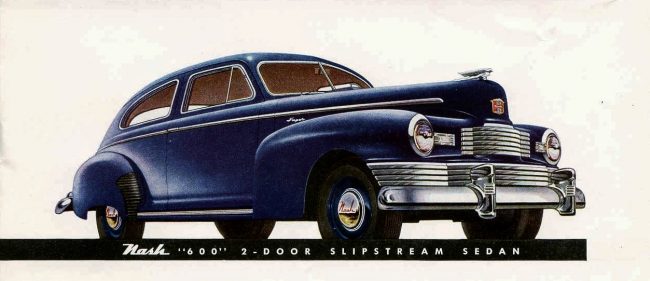
It was quite a change from the 1947-48 Nashes, which like many other 1946-48 cars, were lightly facelifted prewar cars. Models like the 1947 600 utilized bodies that had been in production since 1941.
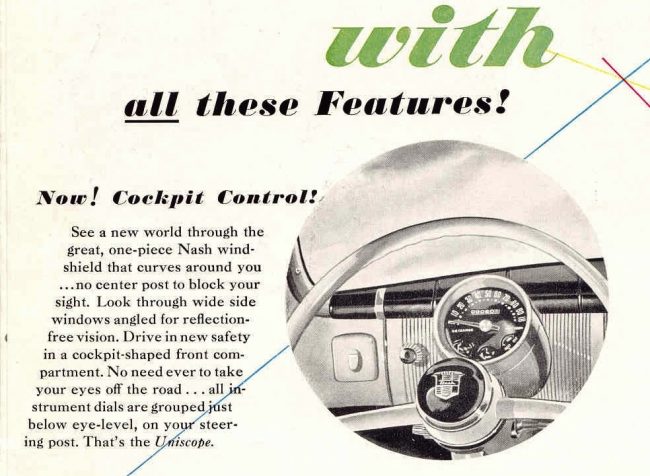
The futuristic touches continued inside, with a ‘Uniscope’ instrument cluster. This bullet-shaped pod was attached to the top of the steering column, with all gauges build into a single glassed-in section.
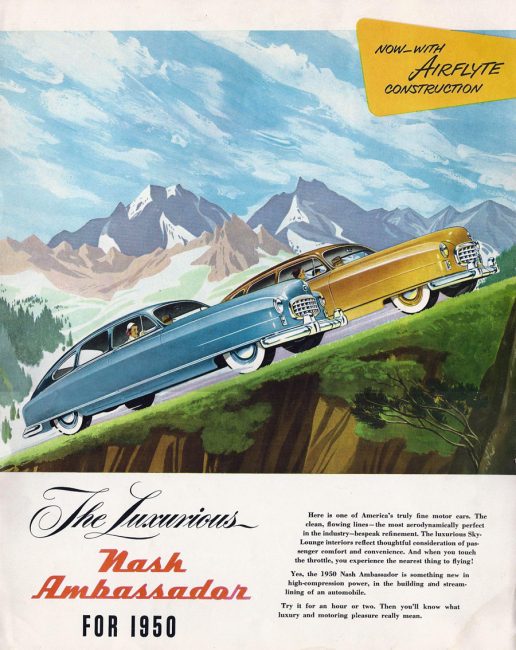
These new Nashes had unit-body construction, a one-piece curved windshield, and continued a unique Nash feature: seats that converted to a bed for campers and cheapskates who didn’t want to pay for a hotel room. The front seat folded completely flat, forming a continuous section all the way to the rear of the car. You could even order accessory screens for the windows for fresh-air snoozing without the hassle of mosquitoes.
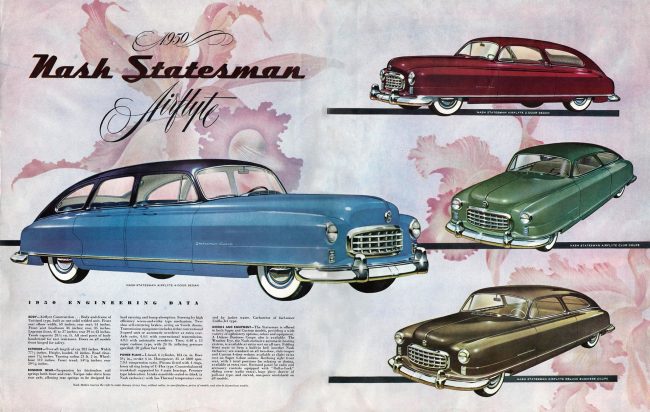
Obviously, the sheetmetal was the big deal; it looked like nothing else on the road. Both front and rear fenders were skirted, which made the cars even more modern looking, but the resulting narrow turning radius probably made these cars a pain to park, not to mention when having to change a flat tire.
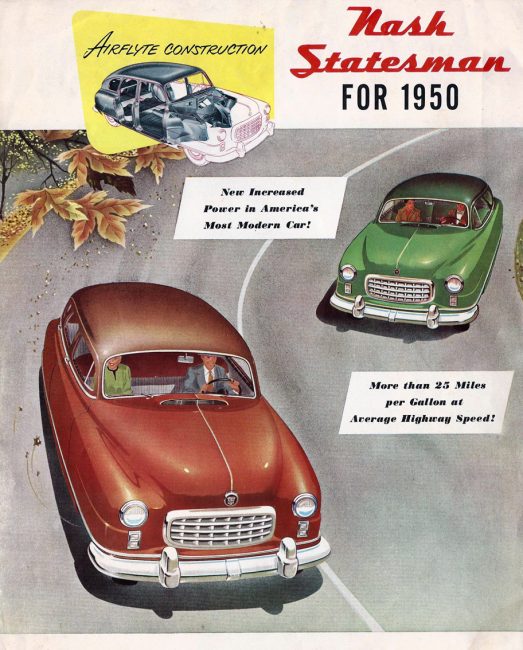
The smooth body design not only looked aerodynamic, it was aerodynamic, with very low drag. Wind tunnel testing of the new Nash produced just 113 pounds of drag at 60 miles per hour, a very good figure for the time. A 1949 ‘pregnant’ Packard was also tested, but had a much higher drag of 171 pounds, despite having a very similar fastback design.

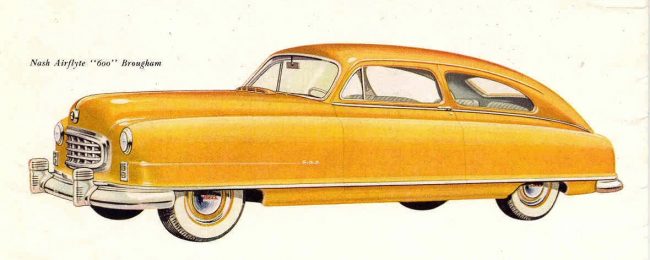
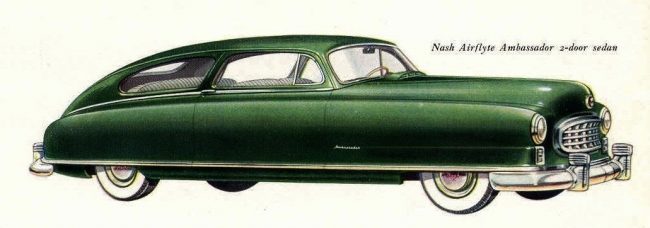
1949 Nashes came in 600 and more luxurious Ambassador models. 600s were powered by a 172.6 CID six cylinder, good for 82 hp at 3800 pound feet of torque. Ambassadors received a larger 234.8 CID six with 112 horsepower and a nine inch longer wheelbase. All that extra length did not translate to greater passenger room, however, as it was all forward of the windshield. The cheapest ’49 was the $1786 600 Super 2 door sedan, while the most expensive was the Ambassador Custom 4 door sedan, which retailed for $2363.

Starting with the Super, the line moved up through mid-line Super Special and top trim Custom levels, in 2-door Brougham, 2-door sedan and 4-door sedan varieties. Broughams were virtually identical to the two-door sedan, but featured more luxurious, individual rear seats with built-in armrests, as this photo from the Nash section of Old Car and Truck Pictures shows (there are lots of other cool Nash and Rambler pics there, definitely worth checking out). Very clubby – I like it!
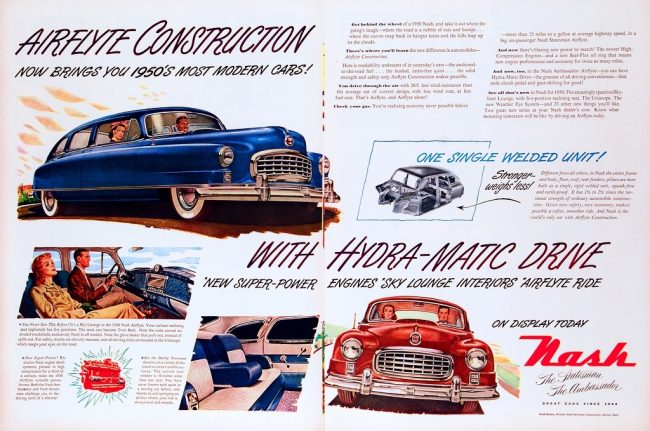
87,145 600s and 42,826 Ambassadors were sold for the 1949 model year. The rarest variant was the flossy Ambassador Custom 2 door Brougham – only 17 were built.
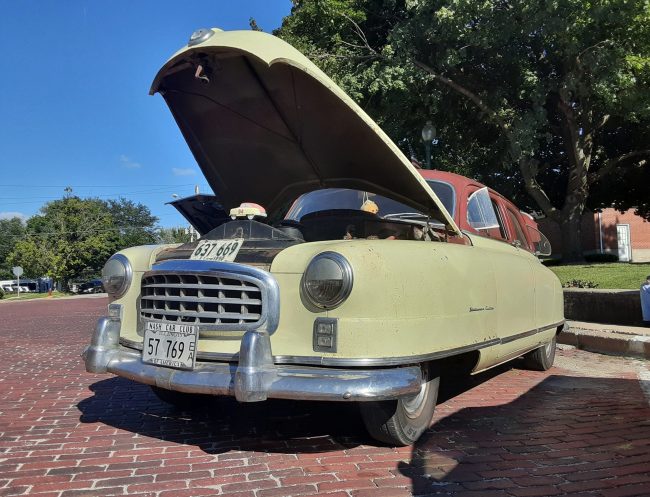
1950 Airflytes were much the same, which was to be expected for a model that was brand new a year earlier. There were some changes though.
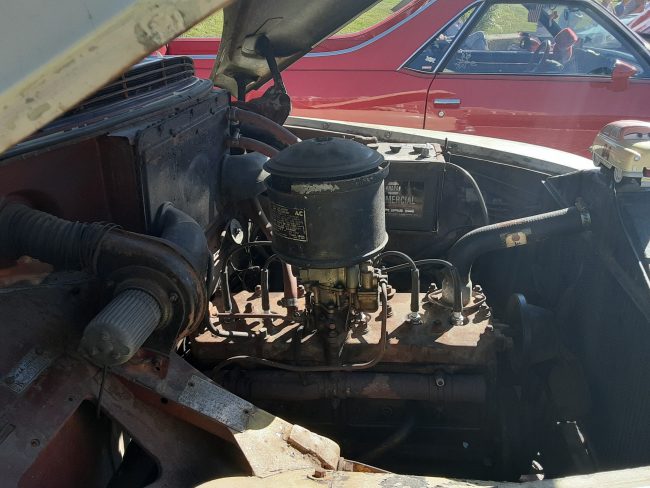
The 600 series was renamed the Statesman, and its L-head six received a quarter inch bump in stroke, which resulted in an additional three horsepower and increased displacement to 184 CID. The backlight’s size was increased for better rear visibility as well.
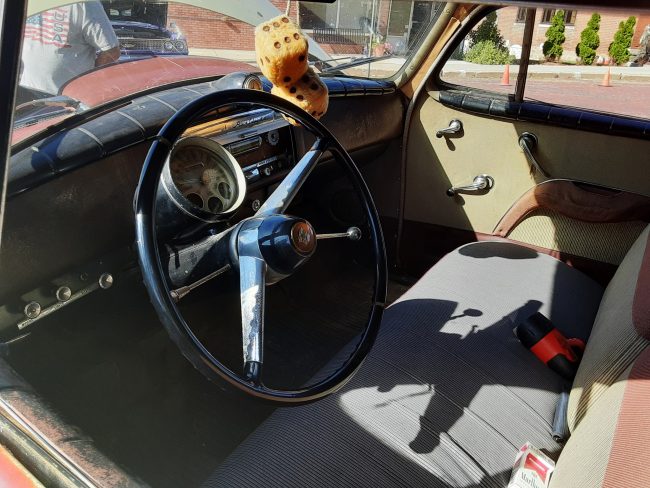
Perhaps the biggest news was in the Ambassador line, which was now available with GM’s Hydra-Matic automatic transmission. Ambassadors also got a slightly longer hood in addition to the larger rear window shared with the Statesman. The Ambassador engine received a new cylinder head as well, which increased power to 115 hp. All Airflytes received slightly larger bumper guards, and were optionally available with seat belts – their first use in an American production car.
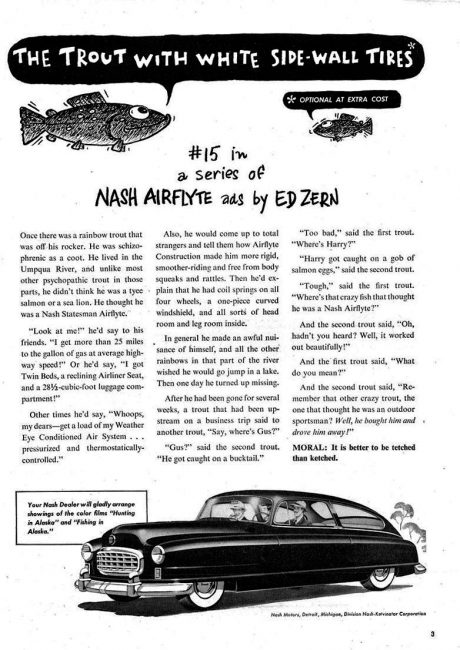
Nash used a variety of advertising to tout the Airflyte. Apparently they contracted with longtime Field & Stream columnist and illustrator Ed Zern for a series of fishing and hunting-themed ads. I thought this ad with the fish was kind of cute, and Nash poking a bit of fun at itself with its fish-shaped cars is endearing to me – not seen much these days, when the point of modern ads is typically “I am the greatest.” Lots more of these Ed Zern ads can be found here on oldcarbrochures.com.
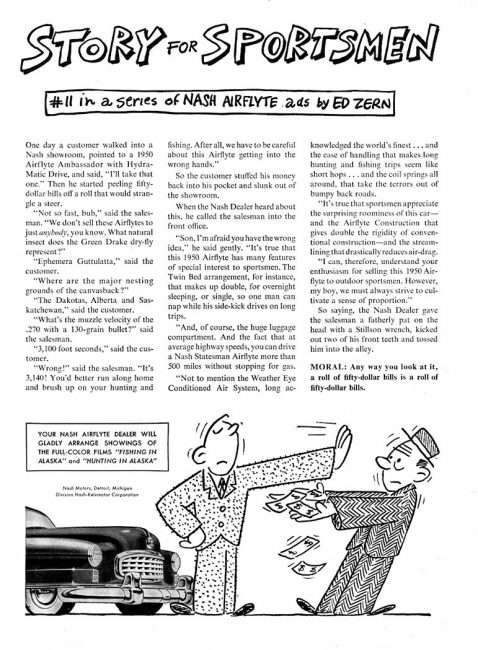
Because Nash had an exclusive on its convertible seats, it was marketed to sportsmen as a hunting rig, as this 1950 advertisement shows. How many fishermen and hunters actually bought an Airflyte for that reason is lost to time, however.
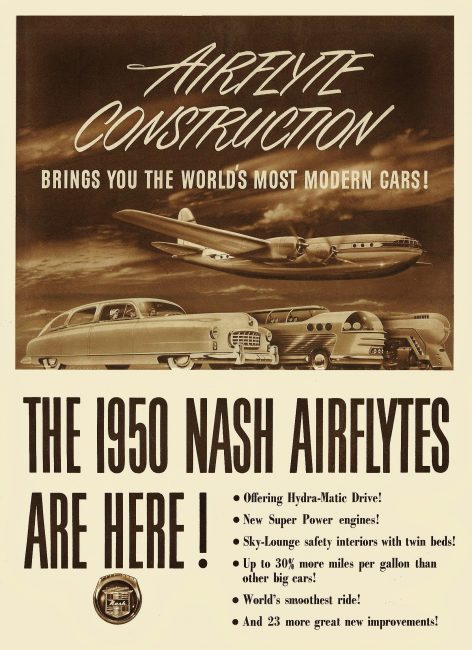
Of course, Nash also talked up the Airflytes modern styling and unit-body contstruction, which Nash likened to aircraft design. It certainly looked like nothing else on the road. Well, almost nothing else on the road.
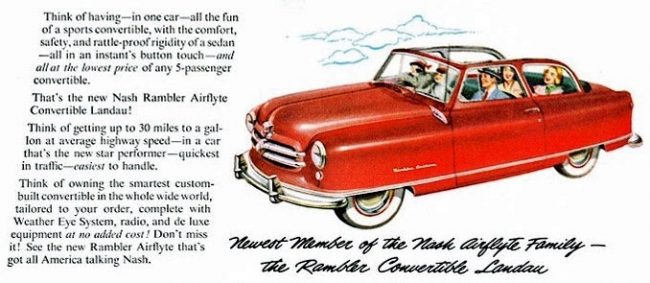
Also in 1950, the Nash Rambler debuted, looking much like a 3/4 scale Airflyte. This compact car, the brainchild of Nash president George Mason, was revolutionary in being a compact luxury car of sorts, with a host of standard equipment, chrome trim and nice upholstery. It would soon overtake the standard Nash line in total sales.
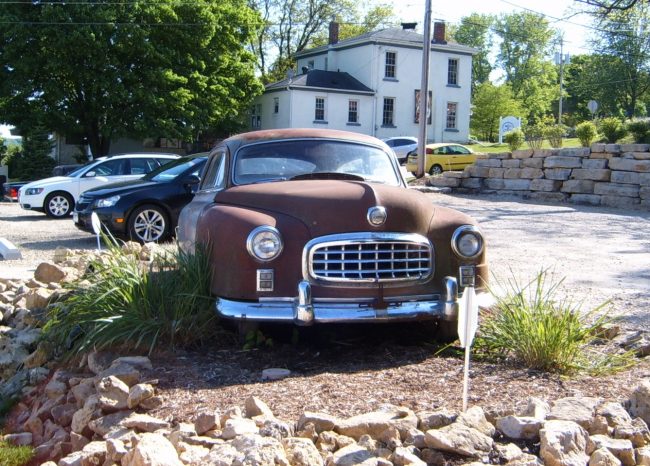
So, we have two examples of the 1950 Statesman today: A Custom four-door seen last month at the cruise night in downtown Mt. Carroll, IL, and a Super 2 door sedan that may look familiar to some.
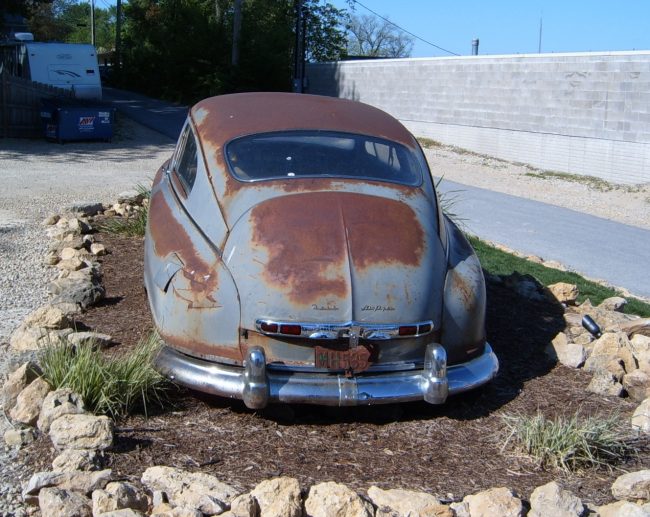
American Pickers is in nearby LeClaire, and this weathered gray Nash is sort of their mascot. The pics of it date from 2012. I always hoped it may get restored, but it hasn’t, and it doesn’t seem likely at this point.
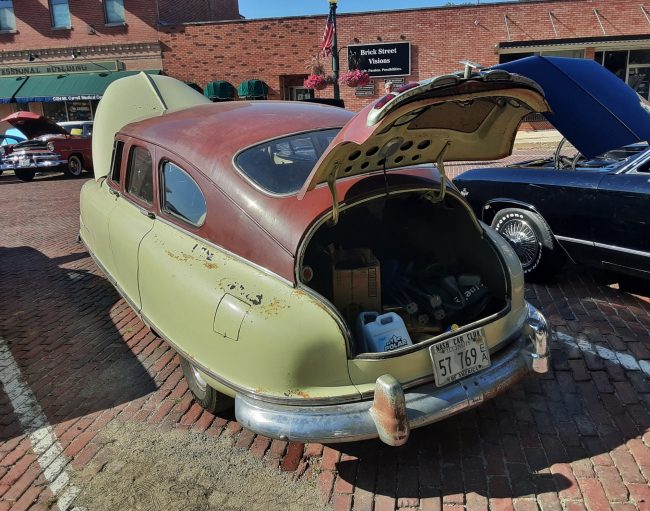
The Airflyte’s turtleback design makes it look smaller in the photos than it really is. My first impression upon seeing the Pickers two-door was that of a giant Volkswagen Beetle with a chrome grille. But more recently when I checked out the russet over yellow sedan at the show, it is really about the same size as a contemporary Chevy or Ford Tudor.
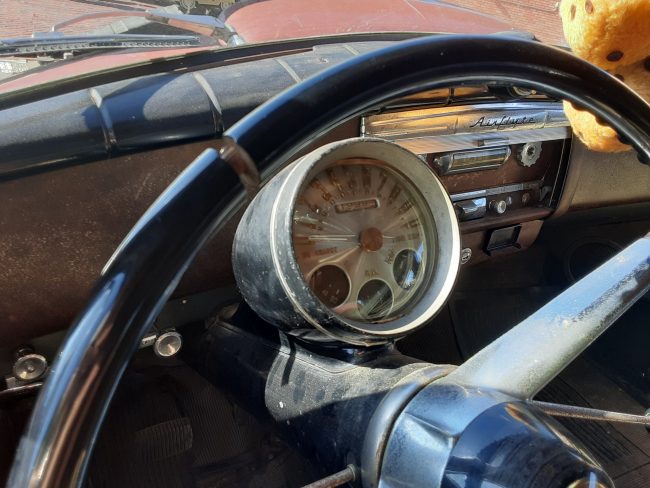
That Uniscope instrument cluster really caught my eye, too. It may have been form over function, but I think it’s pretty cool. Apparently Nash buyers disagreed, because when the Airflyte was facelifted in 1951, it received a conventional instrument panel.
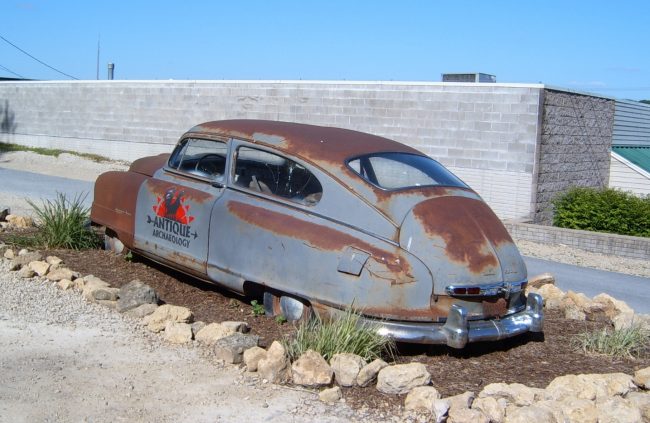
According to the lady at the Pickers store, they found this ’50 Statesman Super at an old gas station near Belle Plaine, Iowa. It is essentially a static display, as the engine and most of the interior is gone, it’s pretty much yard art at this point.
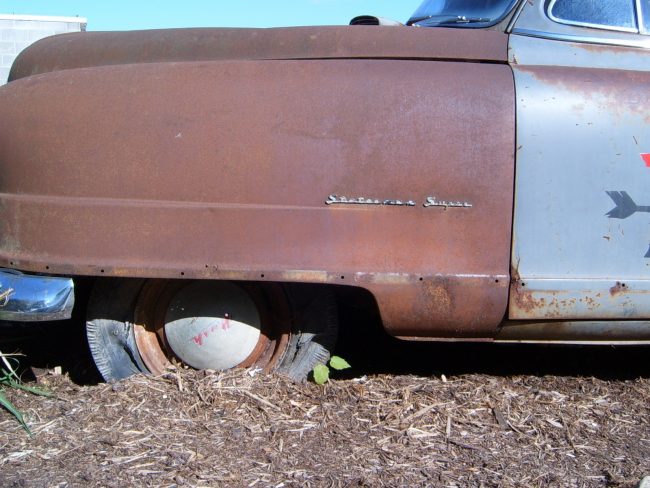
This particular Airflyte model sold for $1,713 when new, and it was the most popular two door Nash that year, with 34,196 made. The Statesman Super Brougham, with its cool rear theater seating, retailed for an extra $22 but was much rarer, with only 1489 takers.
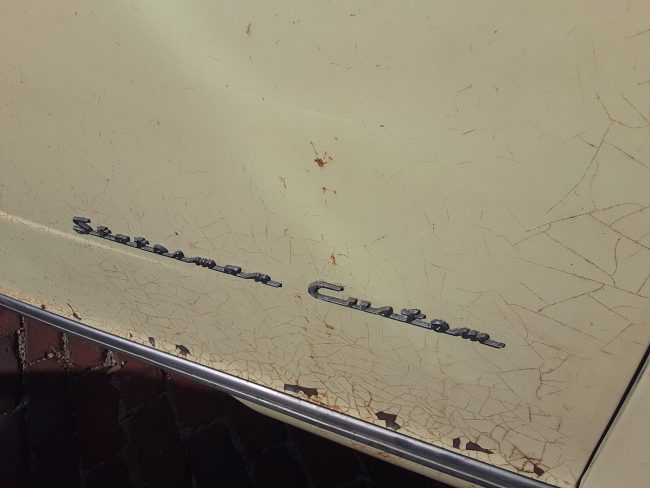
As both of these two are Statesman (or is that Statesmen?), they have a much shorter nose than their Ambassador siblings, but it’s all hood; interior dimensions are identical.

As for the Airflyte, its time was just about up during the ’50 model year. As the 1940s turned into the 1950s, fastbacks became passe very quickly, as was the bathtub like, gently rounded styling.

The 1951 Airflytes got a toothier grille, more chrome and more squared off rear quarter panels with little finlets instead of 1949-50’s radiused sheetmetal. The Uniscope was also toast, replaced with a conventional gauge cluster set into the instrument panel.
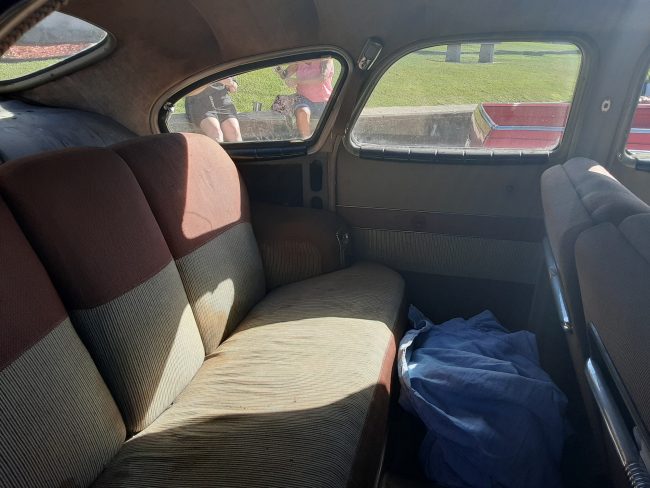
In 1952, redesigned ‘Golden Airflytes’ would have new notchback rooflines, but were still clearly Nashes, with the carryover skirted front fenders-which made parallel parking a royal pain, or so I’ve heard. The fastback era was over, at least until the Pony Car Revolution of the 1960s with various and sundry Chargers, Mustangs and Barracudas.
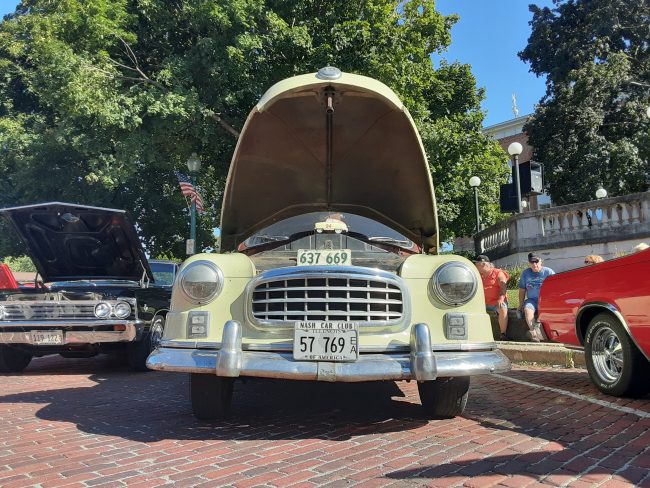
Yes, the fastback version of the Airflyte did not last long, but its modern styling and unique features make it a worthy special interest car today, though you certainly don’t see many!
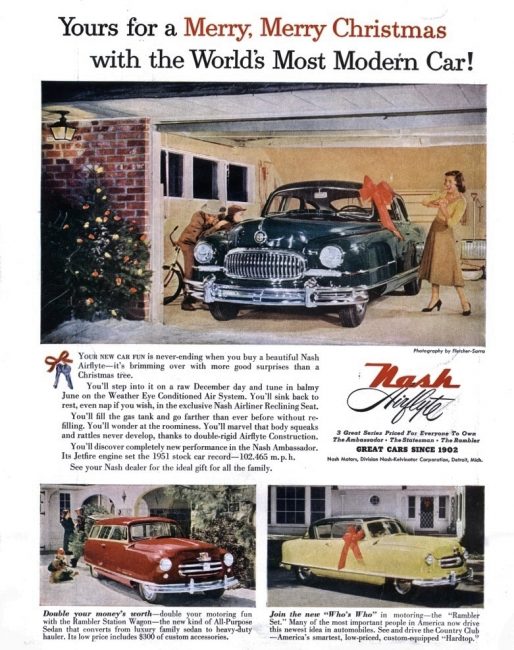







8 Comments
I wonder what the handling was like with the tall build and narrow track suspension. I read C/D’s road test of the new Tahoe that said the stability control cut off the “Fun” at .44 gs on the skidpad. This car probably does similar without the costly tech
For the time (bias ply tires, flaccid shocks) they did handle well and certainly rode smoothly .
There was a traveling auto thrill show that used these and even drove one at full speed missing the right front wheel….
I’m sure someone here can find links for that .
I like fast backs but not for long term ownership .
The ventilation and heating system was pretty amazing, it had a “RANCO” (Scottish) thermostatically controlled hot water valve and the fresh air ducting was buily into the cowl too .
-Nate
Nash put the big boys to shame with regards to their Weather Eye ventilation and heating system, and the first all-season air-conditioning that was entirely contained under the hood/dash rather than the bulky units taking up half the trunk as they systems used by Cadillac, Packard, and the other luxury brands used.
One thing I have never understood is the statement often associated with Nash and Hudson that their unibody cars were much more difficult to facelift and update than their body on frame competitors. Can anyone explain why? After all, the body that goes on a frame has virtually all the structural elements of a unit body as it typically helps stiffen the underlying frame and must offer protection from crashes and inclement weather so it can’t be some flimsy piece of cardboard that can easily be reshaped and restyled. Similarly, why would the hard points on a unit body where the suspension and drivetrain are mounted need to change just because the upper body structure is restyled extensively to keep up with the latest fashion? Could it be that Hudson and Nash unit bodies weren’t actually more difficult/costly to restyle, but instead that both companies just didn’t have the sales volume to afford frequent style changes? Chevrolet sold about 10 times the number of cars that Nash did in 1949, so obviously the General had far more money to spend on restyling, and probably more need as the body dies wore out from such high volume – although even Chevy didn’t change much at all between 1949 and 1952. What am I missing?
The only unit construction cars that I can think of the got frequent thorough restyling were the Japanese ones when they had their since abandoned 4 year design cycle. Plenty of well funded car makers kept unit bodies unaltered much longer like VW and Fiat. That makes me think it must have to do with cost of tooling where a panel has to not only fit a certain hole but be a specified strength at different places on the same panel. One thing the Japanese seem to do at least in their best years well was have the ability to change tooling affordably. Remember the different body works to sell through different low volume domestic dealer networks. I never understood how they were able to pull that off.
My Father Had A 1950 Statesman Super. He Bought It In 1952.The Vehicle Treated Him Well. It Was A Smooth And Comfortable Ride.
I have a 1950 Ambassador Super…3 speed with overdrive…. I pulled the starter motor out as it quit working….I bought by accident a starter for and automatic. they look almost the same . can I use it for my stick shift model super. any negative results to be expected? What is the difference of an AMBASSADOR SUPER AND A CUSTOM —-just the interior??
Leonard ;
Count the number of teeth on the Bendix then see if the flange matches, the Bendix sticks out *EXACTLY* the same distance and so on……
-Nate